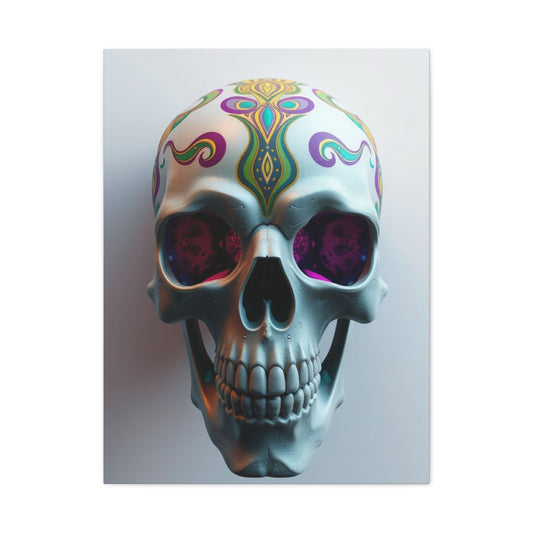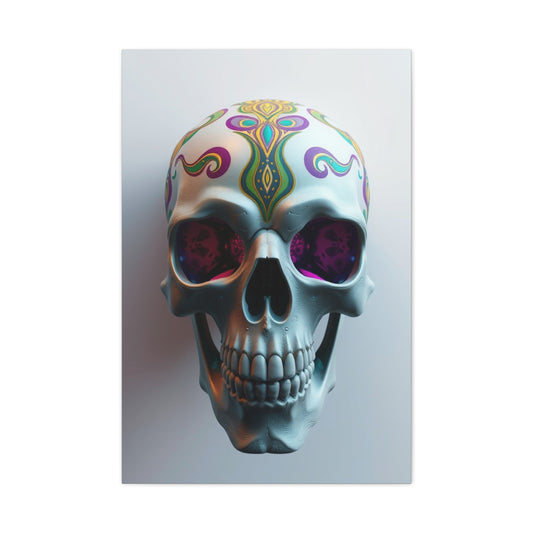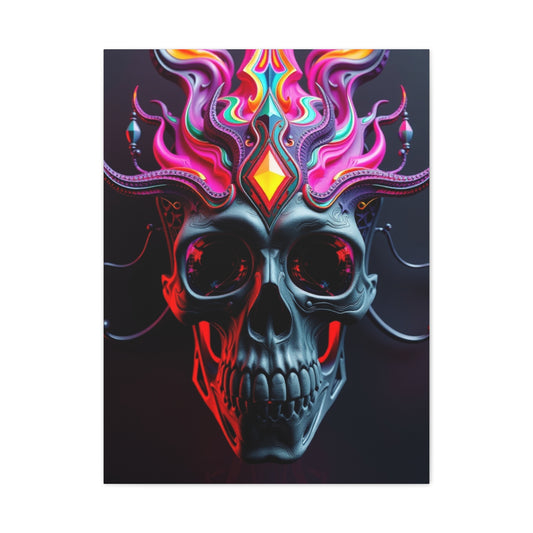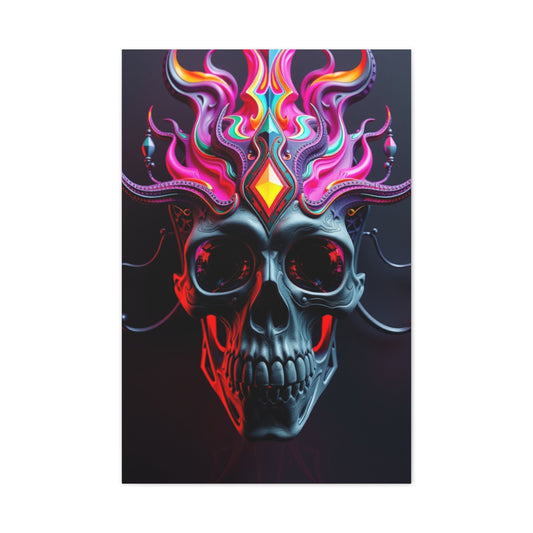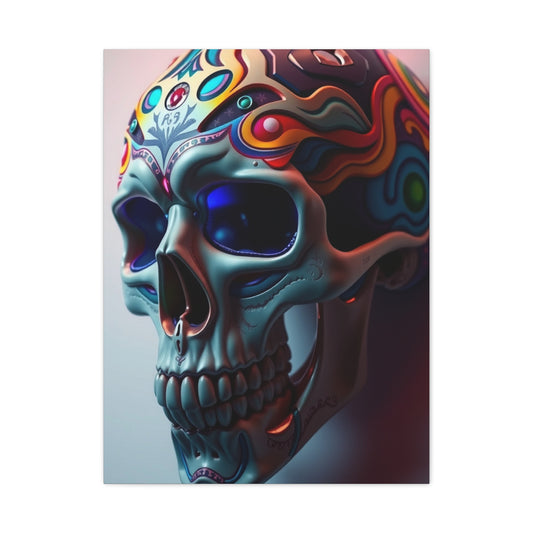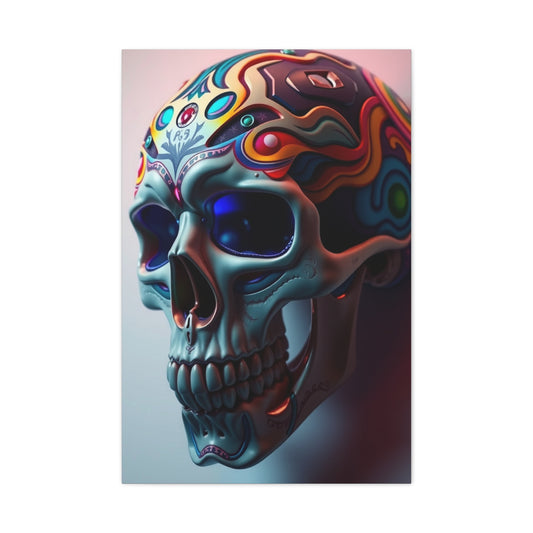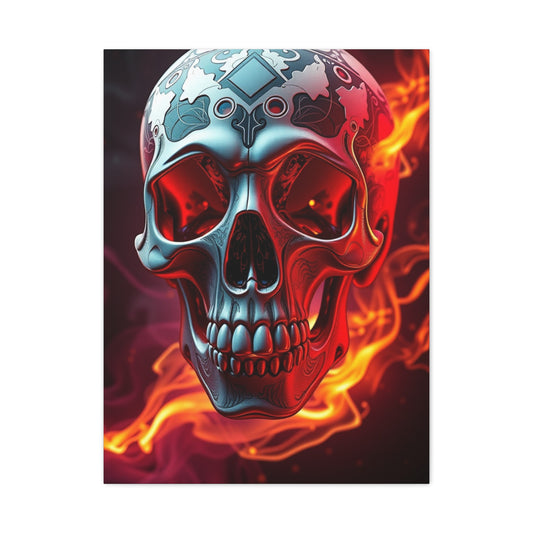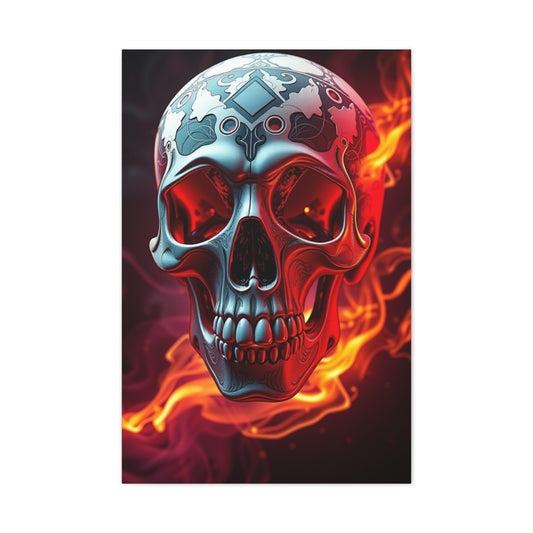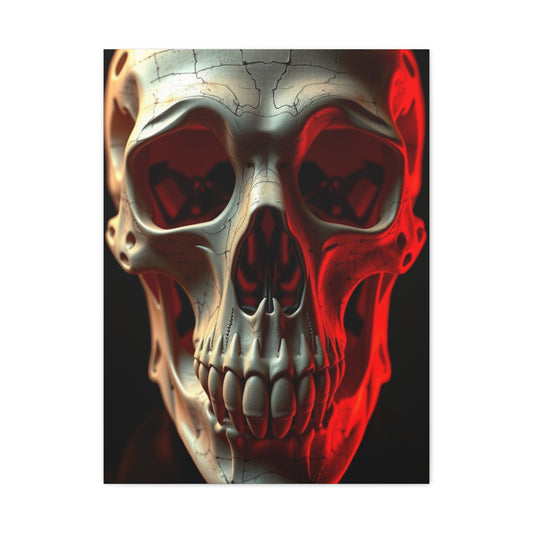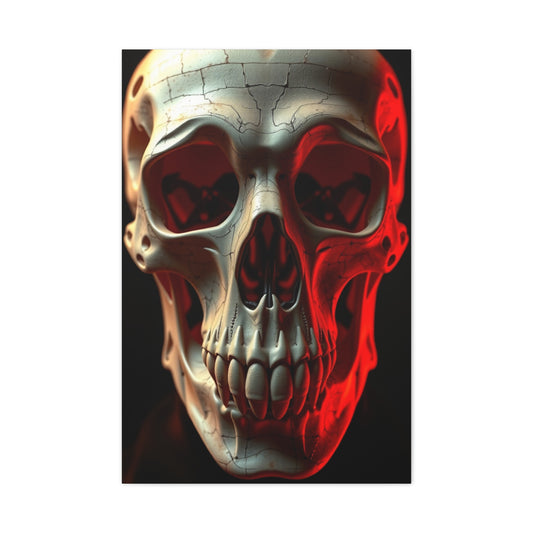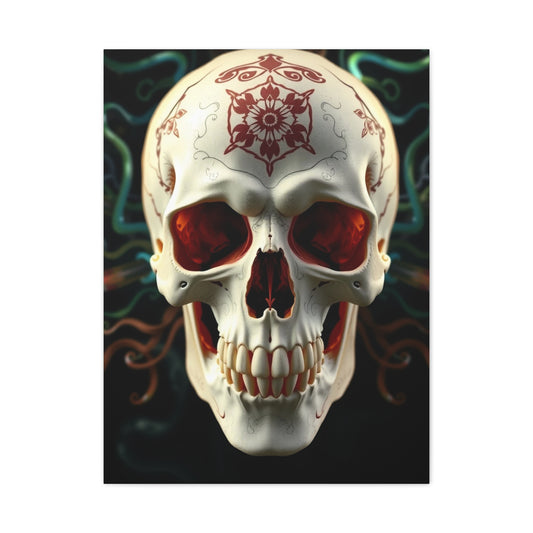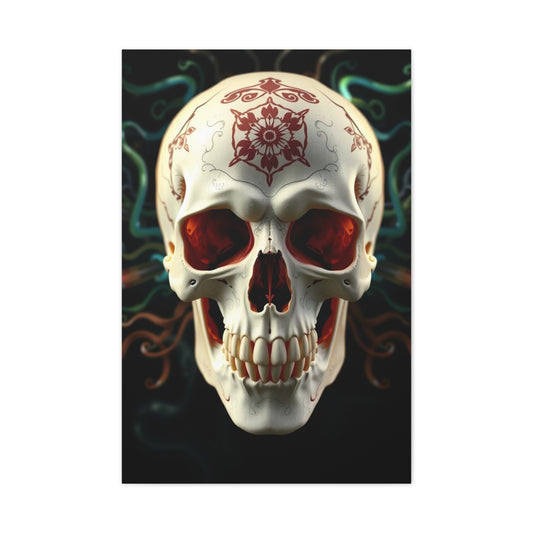In today’s fast-paced world, living spaces can quickly become cluttered with items that hold sentimental value, practical use, or simply appeal to our aesthetic sense. Shelving has evolved beyond mere storage solutions and now serves as both a functional and decorative element in home interiors. Properly styled shelves can transform a room, making it feel organized, inviting, and visually stimulating. From displaying cherished keepsakes to incorporating greenery, shelves offer countless possibilities for enhancing your living space.
Shelves are often underestimated in interior design, but they hold remarkable potential. By thoughtfully arranging your shelving units, you can create a focal point in any room. Shelving doesn’t have to be strictly utilitarian; it can serve as a platform for personal expression. The key is to balance functionality with style. Whether you are working with limited space or have a large area to fill, shelves provide an opportunity to showcase your personality while maintaining order.
Art as a Centerpiece Above Shelves
One surprisingly effective technique for elevating your shelves is the integration of art. Hanging a painting or canvas above a shelving unit can turn an ordinary storage area into a visually appealing display. Art draws the eye upward, creating a sense of intention and cohesion in the room. It can also complement the items placed on your shelves, whether they are books, decorative objects, or family photos.
Selecting artwork that resonates with the theme or color palette of your shelves enhances the overall aesthetic. For example, if your shelves contain personal mementos and photographs, artwork reflecting themes of love, adventure, or nature can add depth and warmth. In spaces where children’s belongings are displayed, colorful or whimsical artwork can create a playful and organized environment. In essence, art transforms shelving from a practical necessity into a visually enriching feature of your home.
In addition, the placement of artwork can help unify a room’s design. Hanging a vibrant piece above a kitchen shelf or bathroom storage unit can redirect attention from potential clutter, creating a harmonious and deliberate visual experience. This approach works particularly well in rooms with horizontal shelving, where the linear arrangement of shelves might otherwise feel monotonous. By introducing an art piece above or around your shelves, you provide a point of interest that engages guests and adds personality to the space.
The Appeal of Neutral Shelves
While bold and colorful shelving units can make a statement, neutral tones offer a timeless and versatile alternative. Shelves in shades of beige, gray, or soft white can seamlessly integrate into almost any interior style while providing a subtle backdrop for the items they display. Neutrals are not synonymous with minimalism or blandness; instead, they offer a canvas that allows your decorative objects to shine.
Neutral shelving units are particularly effective in balancing a room with other strong design elements. For instance, if your furniture or wall treatments are vibrant or patterned, neutral shelves can prevent the space from feeling chaotic. Conversely, if your walls are painted in understated tones, shelving units in soft, earthy colors can create subtle visual interest without overwhelming the room. The understated elegance of neutral shelving works well in contemporary, Scandinavian, and transitional interiors, lending sophistication and cohesion to your space.
Additionally, neutral shelves make it easier to experiment with seasonal or changing décor. Since the base color is versatile, you can rotate decorative items, display seasonal flowers, or update your collection of books and ornaments without worrying about clashing hues. This adaptability makes neutral shelves an investment in long-term interior flexibility, allowing your space to evolve with your personal style and lifestyle needs.
Showcasing Prized Possessions
Shelves provide a perfect opportunity to display cherished items, turning clutter into curated collections. Whether it’s family photographs, travel souvenirs, trophies, or personal memorabilia, shelves allow you to create a personalized narrative within your living space. Organizing your shelves thoughtfully can elevate everyday objects into decorative focal points, celebrating the memories and experiences that matter most.
When arranging your shelves, consider placement and visual flow. Items at eye level naturally draw attention and become conversation starters. Grouping objects by theme, color, or size creates a sense of order and harmony, while intentional asymmetry can add a dynamic and eclectic feel. This approach allows you to highlight special items without overwhelming the shelf or room.
For homes with limited space, corner shelving solutions offer a practical and stylish alternative. Right-angled or floating corner shelves utilize otherwise unused areas, providing storage and display opportunities while maintaining a clean and organized appearance. Repurposing existing furniture, such as converting a bookshelf into a display shelf, is another creative way to maximize functionality while giving your home a unique touch.
Incorporating Gallery Wall Concepts
A modern take on shelving involves integrating shelves into a gallery wall concept. Traditionally, gallery walls consist of framed art or photographs arranged in a cohesive pattern. By incorporating shelving units into this arrangement, you can create a layered, multi-dimensional effect. Floating shelves in neutral or transparent materials work particularly well, allowing the artwork and decorative items to take center stage without competing with the shelving structure itself.
This approach allows for versatility in styling. Small paintings or prints can be combined with decorative objects, collectibles, or plants, creating visual interest and depth. Maintaining a consistent color palette or theme helps unify the arrangement, ensuring that the gallery wall feels intentional rather than chaotic. The combination of art and shelving adds both functionality and aesthetic appeal, providing storage while enhancing the overall design of the room.
The Timeless Appeal of Greenery
Houseplants remain one of the most effective ways to breathe life into a shelving display. From kitchen shelves to bathroom storage, adding greenery not only enhances visual appeal but also improves air quality and promotes a sense of well-being. Plants offer texture, color, and movement, making them ideal companions for decorative objects, books, or personal keepsakes.
Choosing small or medium-sized indoor plants allows for flexibility in shelf arrangements. Varieties such as ferns, ivy, or succulents are popular choices due to their manageable size and aesthetic appeal. Placing plants at varying heights and positions on the shelf creates a natural, layered effect. Additionally, incorporating plants into shelving can soften rigid lines and add warmth to spaces with modern or minimalist designs.
The combination of greenery with other decorative elements creates a balanced and dynamic display. Pairing plants with books, framed photos, or small sculptures adds dimension and encourages visual exploration. This integration of natural elements into shelving transforms storage into a lively, organic feature of your home, enhancing both style and atmosphere.
Shelving in the home is no longer limited to basic storage. It has become a versatile element of interior design, capable of transforming walls and corners into functional art. While Part 1 focused on general tips, art integration, neutral shelving, and displaying personal treasures, this part explores creative layouts and strategies to tailor shelves to different rooms in your home. Thoughtful planning and intentional arrangement can elevate even the simplest shelves into impactful design features.
Floating Shelves: Minimalist and Modern
Floating shelves are a popular choice for contemporary interiors. They appear to “float” on the wall without visible brackets, offering a clean and sleek look. Their simplicity allows for a minimalist aesthetic, yet they can be styled in numerous ways to suit any room. One advantage of floating shelves is their versatility in spacing and height, enabling dynamic arrangements that suit both small and large areas.
In living rooms, floating shelves can function as a gallery-like display for books, sculptures, or plants. Placing a few well-chosen items on each shelf avoids overcrowding while allowing each piece to stand out. A staggered or asymmetrical arrangement can add a sense of movement and creativity, breaking away from rigid, linear patterns. This design flexibility makes floating shelves ideal for homeowners seeking a balance between functionality and style.
In kitchens and bathrooms, floating shelves provide practical storage without compromising aesthetics. Open shelving in these areas can hold essentials while still appearing organized and inviting. Using materials like wood, metal, or glass for floating shelves allows you to match your existing décor, from rustic farmhouse to industrial chic. For instance, wooden shelves can add warmth to a kitchen, while glass shelves in a bathroom maintain an airy and light feel.
Corner Shelves: Utilizing Unused Space
Corners are often overlooked in interior design, yet they offer untapped potential for storage and display. Corner shelving units are ideal for transforming unused angles into functional and decorative spaces. These shelves come in a variety of designs, including triangular floating units, tiered corner shelves, or L-shaped brackets.
In small apartments or rooms with limited floor space, corner shelves are a practical solution. They can hold books, plants, or decorative items without crowding the main area. Corner units can also serve as subtle room dividers or visual anchors, adding depth to an otherwise flat wall. When styling corner shelves, consider layering objects of varying heights and textures to create a visually engaging display. For example, combining a small potted plant, a framed photo, and a decorative figurine can transform a corner into a focal point.
Thematic Shelving: Curated Collections
One way to elevate your shelves is to adopt a thematic approach. This involves organizing items based on a shared theme, color palette, or purpose. Curated collections create a sense of cohesion, turning a random assortment of objects into a deliberate and visually pleasing arrangement.
For book enthusiasts, arranging books by color or size can create an eye-catching rainbow effect or a neatly uniform look. For collectors of figurines, travel souvenirs, or vintage items, grouping objects by type or origin enhances storytelling and emphasizes personal interests. A thematic approach also reduces visual clutter, as each shelf has a clear purpose and focus.
Color coordination is another effective strategy. Selecting decorative items within a complementary color scheme ensures that shelves harmonize with the overall room design. Neutral-toned shelves benefit from pops of color through vases, artwork, or textiles, while bold-colored shelves can be paired with subtle accents to prevent overwhelming the space.
Layering and Depth: Adding Dimension to Shelves
Adding depth to shelving arrangements transforms flat surfaces into dynamic displays. Layering items by placing taller pieces at the back and smaller objects in front creates visual interest and a sense of dimension. This technique works particularly well for open shelving units in living rooms or entryways, where shelves are often a central feature of the design.
Incorporating varied textures also enhances the layered effect. Combine materials such as wood, metal, glass, or ceramics to create contrast and tactile appeal. Books can be stacked horizontally, vases placed on small pedestals, and framed photos slightly offset to create a curated yet relaxed arrangement. Layering is not limited to objects; even art or mirrors placed on the shelves can add depth and reflect light, brightening the space.
Shelves for Small Spaces: Efficiency Meets Style
Maximizing storage in compact areas is a common challenge in modern homes. Shelving provides an effective solution that balances efficiency with style. Vertical shelving units are particularly useful, as they utilize height instead of floor space. Tall, narrow shelves can hold books, plants, or decorative objects while maintaining a clean and open feel.
In small kitchens, wall-mounted shelves above countertops free up valuable workspace while keeping essentials within reach. In bathrooms, tiered shelving or over-the-toilet units provide storage for toiletries and towels without encroaching on limited floor space. In bedrooms or living rooms, using shelves near windows or above furniture creates additional display areas without crowding the main space.
Styling Shelves by Room Function
The function of the room plays a significant role in determining how shelves should be styled. Different areas of the home benefit from tailored shelving strategies.
In the living room, shelves can act as both storage and focal points. Combining books, art pieces, and personal mementos creates a balanced display that is both functional and visually appealing. Incorporating small houseplants or succulents adds freshness and softness, particularly in rooms with strong geometric lines or neutral tones.
In the kitchen, shelves are primarily practical, but they can still contribute to style. Displaying attractive cookware, neatly organized spice jars, or a small herb garden combines functionality with visual interest. Open shelving in the kitchen encourages organization and easy access, while providing an opportunity to showcase decorative elements alongside everyday items.
In bedrooms, shelves can display personal collections, framed photos, or sentimental items. Floating units above the bed or along an empty wall maximize storage while maintaining a clean, uncluttered aesthetic. Soft lighting, such as small LED strips or fairy lights, can enhance the mood and highlight specific items.
In bathrooms, shelves provide a way to organize toiletries, towels, and decorative accessories. Combining practical items with aesthetic touches like small plants, candles, or ceramic containers creates a spa-like atmosphere. Using materials that resist moisture, such as treated wood or metal, ensures durability while maintaining style.
Creative Arrangements: Mixing Shapes and Materials
Breaking away from uniform, linear shelving arrangements can create a unique and engaging interior. Combining shelves of different shapes, sizes, and materials adds visual intrigue. For instance, pairing floating shelves with cube-shaped units or open-frame shelving creates contrast and encourages exploration of the display.
Material mixing also contributes to a sophisticated design. Wood adds warmth and texture, metal introduces industrial appeal, and glass maintains openness and lightness. Combining these materials in a single display can produce an eclectic yet harmonious effect. Experimenting with unconventional arrangements, such as alternating shelf heights or offsetting units horizontally, keeps the display dynamic and avoids a static, predictable layout.
Seasonal and Rotating Displays
Another way to keep shelving interesting is by rotating décor seasonally or periodically. Changing displays according to seasons or trends allows for a fresh and dynamic look without permanent alterations. For example, shelves can feature cozy accents in winter, such as candles or pinecones, and lighter, brighter items in spring, like flowers or pastel-colored objects.
Rotating displays also allows you to highlight different items at different times. A favorite collection of books, artworks, or souvenirs can take center stage while other pieces are temporarily stored. This approach encourages creativity and prevents shelving arrangements from becoming stagnant or predictable.
Incorporating Technology and Lighting
Modern shelving can also integrate technology to enhance both function and ambiance. LED strip lights, spotlights, or small lamps installed on or beneath shelves highlight key items and create a warm, inviting atmosphere. Lighting can emphasize textures, colors, or art pieces, transforming shelves into a subtle centerpiece of the room.
For media or entertainment areas, shelves can accommodate speakers, smart devices, or decorative tech accessories. Incorporating these elements thoughtfully ensures that technology does not disrupt the aesthetic flow, maintaining a cohesive and stylish look throughout the space.
Shelving is more than a practical element of home design—it is an opportunity to showcase personal taste, create visual interest, and enhance the overall aesthetic of any room. While Parts 1 and 2 covered general concepts, art integration, room-specific strategies, and creative layouts, Part 3 delves into the art of styling, combining objects, and achieving balance on your shelves. Mastering these techniques ensures that your shelves are not only organized but visually captivating.
The Principle of Balance
One of the most important aspects of shelf styling is achieving balance. A balanced shelf does not mean perfect symmetry, but rather a sense of visual harmony. Too many large items clustered together can feel heavy and overwhelming, while too many small pieces scattered haphazardly may appear chaotic.
To create balance, mix objects of varying sizes, shapes, and textures. For example, pairing a tall vase with a stack of books and a small sculpture creates visual weight and variety. Balance can also be achieved through color. Distributing colors evenly across a shelf or arranging objects with complementary shades helps unify the display. The key is to guide the viewer’s eye naturally from one item to another, ensuring a cohesive and appealing composition.
Layering for Depth and Dimension
Layering is a fundamental technique for creating depth on shelves. Place larger items at the back and smaller objects in front to add dimension. Overlapping objects slightly or positioning them at different heights encourages the eye to explore the display rather than focusing on a single point.
Layering can also involve using different textures. Combine materials such as wood, metal, ceramics, glass, or woven elements to introduce tactile interest. A smooth ceramic vase paired with a textured wooden box and a metallic figurine creates an engaging contrast, elevating the visual appeal of the shelf. Layering not only adds sophistication but also transforms a flat arrangement into a multidimensional display.
Grouping Objects in Odd Numbers
A simple yet powerful styling tip is grouping objects in odd numbers. Trios, fives, or sevens tend to be more visually pleasing than even-numbered arrangements. Odd-numbered groups create a natural focal point and prevent shelves from looking too rigid or predictable.
For example, placing three candles of varying heights together or arranging five decorative objects in a staggered formation can create an effortless yet polished appearance. Odd-numbered groupings encourage a sense of movement and rhythm, which enhances the overall balance and aesthetic of the shelf.
Mixing Function with Decoration
Shelves are not just for display; they also serve practical purposes. Combining functionality with decorative appeal ensures that your space remains organized while maintaining style. Books, storage boxes, baskets, and containers can be used decoratively without compromising practicality.
For instance, neatly stacked books with decorative objects on top can create both storage and style. Baskets or boxes can hide miscellaneous items while contributing to the overall design through color, pattern, or texture. The key is to integrate functional pieces seamlessly with purely decorative items, ensuring that every element contributes to the cohesive look of the shelf.
Incorporating Color and Patterns
Color and pattern play a significant role in shelf styling. Coordinating colors across objects or maintaining a subtle palette helps create unity, while introducing bold accents can add interest. For neutral shelves, incorporating vibrant decorative items can create a focal point, whereas colorful shelves may benefit from more subdued tones to avoid visual clutter.
Patterns can also enhance shelf arrangements. Mixing geometric, floral, or abstract designs in small items, such as vases, trays, or boxes, adds variety without overwhelming the display. Repeating certain colors or patterns across different objects can help tie the arrangement together, providing cohesion and sophistication.
Vertical and Horizontal Balance
Achieving vertical and horizontal balance is essential for creating harmonious shelf displays. Taller items should be distributed evenly along the shelf, avoiding one area that feels visually heavy. Horizontal balance involves spacing objects in a way that guides the eye smoothly across the display.
One effective strategy is to alternate heights and shapes across the shelf. For example, a tall plant on one side can be balanced with a stack of books topped with a small decorative item on the opposite side. This approach prevents shelves from appearing lopsided while creating a dynamic and interesting arrangement.
Incorporating Personal Touches
Shelves are an excellent way to showcase individuality and personal style. Including items with sentimental value, such as photographs, souvenirs, or handmade crafts, adds personality and depth to the display. Personal touches make shelves more than just storage; they become a storytelling element within the home.
When incorporating personal items, ensure they are arranged thoughtfully. Group similar objects together or position them alongside complementary decorative pieces to maintain visual harmony. By balancing personal artifacts with neutral or visually appealing objects, shelves remain organized and stylish while reflecting your unique taste.
Using Mirrors and Reflective Elements
Mirrors and reflective elements can enhance the visual impact of shelves. Small mirrored objects or metallic finishes reflect light, creating the illusion of depth and brightness. This technique is particularly effective in smaller rooms, where light reflection can make the space appear larger and more open.
Incorporating mirrored trays, metallic vases, or decorative objects with glossy finishes adds sophistication and interest. Reflective elements work well when combined with other textures, creating a layered and dynamic display that captures attention while maintaining cohesion.
Integrating Plants and Natural Elements
Houseplants and natural materials remain a popular choice for shelf styling. Plants add life, color, and texture, while natural elements like wood, stone, or woven materials contribute warmth and visual appeal.
Small potted plants, trailing vines, or air plants can be strategically placed on shelves to soften lines and introduce organic movement. Natural elements like wooden boxes or ceramic bowls complement decorative objects, creating an inviting and harmonious display. The combination of greenery and tactile materials enhances the sensory experience of the shelf, making it feel both stylish and welcoming.
Highlighting Key Pieces
Every shelf benefits from a few standout pieces that act as focal points. These could be larger objects, bold colors, or uniquely shaped items. Highlighting key pieces draws attention and anchors the arrangement, providing a sense of hierarchy within the display.
For example, a tall sculpture or a striking vase can serve as the central element around which other objects are arranged. Surrounding these focal points with smaller items, such as books, candles, or figurines, creates balance and prevents the display from feeling cluttered. By identifying and emphasizing key pieces, you can elevate the overall aesthetic and visual impact of your shelves.
Varying Heights and Layers
Variety in height and layering is essential for dynamic shelf styling. Alternating tall and short objects, stacking books, or adding small pedestals or risers can create multiple levels of interest. This approach ensures that objects are not competing for attention and allows each piece to stand out individually.
Layering objects vertically and horizontally also creates rhythm and movement across the shelf. For instance, stacking two or three books horizontally and placing a small sculpture on top introduces dimension and encourages the eye to explore the arrangement. Varying heights and layers make shelves visually engaging and prevent flat, monotonous displays.
Maintaining Negative Space
While it may be tempting to fill every inch of shelf space, incorporating negative space is crucial. Empty areas allow the eye to rest and prevent the display from feeling overcrowded. Negative space creates contrast, emphasizing the objects that are present and enhancing their visual appeal.
Strategically leaving gaps between objects, or intentionally spacing out items, ensures that the shelf appears curated rather than cluttered. Negative space also makes it easier to rotate or replace items seasonally, allowing for a dynamic and ever-evolving display.
Understanding Function and Form
Shelves serve a dual purpose: they provide storage and act as a design feature. Balancing function and form is essential. Shelves must accommodate items efficiently while maintaining a curated, aesthetically pleasing display. A shelf cluttered with items loses its visual impact, whereas a shelf with only decorative objects may feel impractical.
Start by assessing the purpose of each shelving unit. Is it primarily decorative, practical, or a mix of both? Living room shelves often serve as a combination of storage and display, while kitchen shelves prioritize accessibility and organization. Bedrooms or bathrooms may focus on personal items, toiletries, or decorative accents. Understanding the primary function of each shelf helps in selecting appropriate items, spacing, and arrangement techniques.
Decluttering Before Styling
A crucial step before styling is decluttering. Removing unnecessary or outdated items creates a clean slate and ensures that only meaningful or visually appealing objects remain. Evaluate each item’s value—whether practical, aesthetic, or sentimental—and determine whether it deserves a spot on the shelf.
Decluttering also provides an opportunity to reorganize items for better visibility and accessibility. Group similar objects together, remove duplicates, and store items that do not belong on display elsewhere. A decluttered shelf is easier to style, easier to maintain, and immediately appears more elegant and intentional.
Creating a Flexible Layout
Flexible layouts allow you to adapt shelves to evolving needs. Rather than rigidly arranging items, leave space for new additions or seasonal décor changes. Adjustable shelves, modular units, or open configurations provide flexibility, enabling you to move objects around without disrupting the overall aesthetic.
Modular shelving units offer numerous possibilities. You can combine shelves of different heights or depths to create a unique arrangement or reposition shelves to accommodate larger objects. Flexibility ensures that your shelves can evolve with your personal style, collections, and functional requirements.
Grouping and Layering for Visual Interest
Advanced shelf styling involves careful consideration of grouping and layering. Objects should be grouped by theme, material, or color, creating cohesion across the display. Layering introduces depth, with taller objects at the back and smaller items in the foreground, adding dimension and intrigue.
For instance, a stack of books can serve as a platform for a decorative figurine, a candle, or a small plant. Layering objects of varying heights and textures prevents shelves from looking flat or monotonous. Combining natural elements, metallic accents, and colorful objects adds richness, ensuring that each shelf is visually dynamic while maintaining balance.
Incorporating Art and Personal Items
Art and personal items elevate shelves from storage solutions to personalized design statements. Framed photos, small canvases, or miniature sculptures can be integrated alongside functional items like books and containers. The key is balance—artwork should complement the other elements without overwhelming the display.
When arranging personal items, consider scale and placement. Place larger pieces at eye level to serve as focal points, while smaller objects can be layered around them. Rotating personal artifacts seasonally or occasionally refreshing the arrangement keeps the display dynamic, making shelves a living reflection of your lifestyle and experiences.
Maintaining Negative Space
Even in advanced styling, negative space remains critical. Empty areas between objects provide visual relief and emphasize key pieces. Crowding shelves can make even the most carefully curated displays appear chaotic.
Strategically leave gaps to highlight focal items, draw attention to textures, or create a sense of rhythm across the shelving unit. Negative space also allows for future additions, seasonal décor changes, or temporary displays without disrupting the overall harmony.
Shelf Lighting and Ambiance
Lighting plays a pivotal role in enhancing the appeal of shelves. Proper illumination highlights textures, colors, and shapes, transforming ordinary shelving into a dramatic focal point. LED strips, spotlights, or small lamps can be used to accentuate key objects or create ambient lighting.
For open shelving units, indirect lighting beneath or behind shelves can emphasize layered objects and add depth. In smaller rooms, reflective surfaces combined with lighting can make shelves appear larger and brighter. Lighting should complement the overall room design, enhancing the visual impact of the shelving unit while maintaining functionality.
Incorporating Greenery and Natural Elements
Houseplants and natural elements remain essential for a sophisticated, welcoming shelf display. Plants introduce life, color, and texture, while natural materials like wood, stone, or woven containers contribute warmth.
Choosing the right plants depends on shelf location and available light. Low-light-tolerant plants such as ferns or snake plants are ideal for interior shelves, while sun-loving varieties like succulents thrive near windows. Varying plant sizes, combining trailing and upright forms, and layering plants with decorative objects add depth and visual interest.
Natural elements beyond plants, such as driftwood, stones, or ceramic pieces, can complement both functional and decorative items. Incorporating these materials enhances texture and adds an organic dimension to your display.
Styling by Room Type
Advanced shelf styling considers the specific needs and aesthetics of different rooms.
-
Living Room: Living room shelves often combine books, decorative objects, and personal memorabilia. Taller items should be interspersed with smaller pieces, and focal points should be established to guide the viewer’s eye. Mixing textures, colors, and layers creates a dynamic and engaging display.
-
Kitchen: In the kitchen, shelves prioritize functionality without sacrificing style. Attractive containers, neatly organized jars, and a few decorative elements can make functional shelves visually appealing. Incorporating greenery like small herb pots adds freshness and a natural touch.
-
Bedroom: Shelves in bedrooms often display personal items, photos, or keepsakes. Floating units or corner shelves maximize space, while layered arrangements and soft lighting enhance intimacy and charm.
-
Bathroom: Bathroom shelving combines practical storage with aesthetic appeal. Stack towels neatly, incorporate small decorative elements, and use moisture-resistant materials to ensure longevity. Houseplants or small decorative containers can create a spa-like atmosphere.
Long-Term Maintenance Tips
Maintaining shelves over time is essential to preserving both function and style. Regular cleaning, dusting, and periodic reorganization prevent shelves from becoming cluttered.
Avoid overcrowding by removing items that are no longer relevant or used. Check for stability, particularly with floating shelves or modular units, to ensure safety and durability. Rotate decorative objects or personal items periodically to refresh the display, keeping it engaging and visually appealing.
Seasonal Rotation and Flexibility
Shelves can be updated seasonally to reflect holidays, seasonal décor, or personal milestones. For example, spring arrangements may include flowers and pastel accents, while autumn displays feature warmer tones and natural materials. Seasonal rotation keeps shelves fresh and allows for experimentation with color, texture, and layout.
Flexible shelving units make this process easier. Adjustable shelves or modular components allow items to be rearranged without permanent changes. Rotating displays also provide an opportunity to highlight different collections, ensuring that the shelving remains dynamic and engaging throughout the year.
Incorporating Functional Storage Solutions
Advanced shelving often blends decorative and functional elements seamlessly. Decorative boxes, baskets, and containers can store items while adding texture and style. Stackable storage, vertical units, or modular compartments maximize space efficiency while maintaining an organized appearance.
For example, books can be stacked horizontally to serve as platforms for decorative objects, while decorative containers can hide small essentials. Combining practicality with aesthetics ensures that shelves remain useful without compromising visual appeal.
Advanced Styling Techniques
Several advanced techniques can elevate shelf styling:
-
Color Blocking: Group objects by color to create visual sections within a shelf. This technique draws attention and organizes items in a pleasing, intentional way.
-
Repetition and Rhythm: Repeat shapes, colors, or textures across multiple shelves to create continuity. This helps unify complex arrangements and guides the eye naturally.
-
Layering Materials: Combine wood, metal, glass, and ceramic to add dimension and contrast. Layering materials enriches the tactile and visual experience of the shelves.
-
Focal Point Anchoring: Establish a key object on each shelf or unit, then build the display around it. Focal points anchor the arrangement and give a sense of purpose to each display.
Sustainable and Mindful Styling
Sustainability is an important consideration in modern interiors. Repurposing old furniture, selecting durable materials, or incorporating natural elements minimizes waste and promotes mindful living. Shelves offer opportunities to showcase sustainable décor, such as handmade crafts, recycled materials, or potted plants.
Mindful styling also involves thoughtful object selection. Avoid overcrowding, prioritize meaningful items, and integrate versatile pieces that can serve multiple purposes. This approach ensures that shelves remain functional, organized, and visually appealing without unnecessary clutter.
Tips for Long-Term Cohesion
Maintaining a cohesive look over time requires consistent styling principles. Keep color palettes, material choices, and object themes aligned. Periodically review shelves to remove outdated items or adjust arrangements as collections grow. Flexibility, rotation, and careful curation prevent shelves from feeling static or chaotic.
Consider incorporating a central theme across all shelving units in a room or home. Even subtle cohesion—through color, material, or object style—enhances the overall design flow. Cohesion ensures that shelves complement the room rather than competing with other décor elements.
Shelves are more than storage—they are versatile design tools that blend function, style, and personal expression. Advanced styling involves careful consideration of balance, layering, focal points, color, texture, and negative space. Integrating personal items, art, plants, reflective elements, and seasonal variations adds depth, dynamism, and character to shelving displays.
Long-term maintenance, decluttering, flexible arrangements, and mindful styling ensure that shelves remain visually appealing and functional over time. By combining practical storage solutions with advanced styling techniques, homeowners can transform ordinary shelves into striking focal points that enhance the overall aesthetic of any room.
Shelving is an ongoing process of curation, creativity, and personal expression. When approached thoughtfully, shelves become a reflection of your personality, lifestyle, and design sensibilities. From everyday organization to dynamic seasonal displays, they elevate interiors while maintaining utility, demonstrating that shelves are as much about art as they are about storage.
Incorporating the principles outlined in this series—layout planning, creative arrangements, styling techniques, and long-term care—ensures that shelves are not only functional but also inspiring. Shelves can transform any room, turning storage into a celebrated design element that balances practicality with elegance. By investing time in careful styling, organization, and maintenance, your shelves can become a central feature of your interior, combining beauty, functionality, and personal meaning for years to come.
Shelving has evolved far beyond simple storage. Modern interiors demand versatile, stylish, and functional shelves that cater to both aesthetic appeal and practical needs. While previous sections explored layouts, styling, balance, and maintenance, this part focuses on innovative shelf concepts, multi-functional designs, trending styles, and advanced tips for contemporary spaces. By understanding these approaches, you can create shelving solutions that are both visually engaging and highly practical.
Open Shelving: Maximizing Visibility and Access
Open shelving remains one of the most popular trends in modern interior design. Unlike closed cabinets or cupboards, open shelves provide immediate access to stored items and allow for creative styling. Their transparency encourages organization, as clutter is more noticeable and easier to manage.
In kitchens, open shelves can replace upper cabinets, providing a sense of openness and making cooking essentials easily reachable. Stylish containers, neatly stacked dishes, or decorative jars can combine practicality with design. In living rooms, open shelving units allow books, art, and collectibles to be displayed prominently, turning storage into a statement.
The flexibility of open shelves allows for seasonal updates and frequent styling changes. They also offer an opportunity to mix decorative objects with functional items, ensuring a curated yet practical arrangement. Proper spacing and thoughtful organization are key to maximizing the aesthetic and utility of open shelving.
Floating Shelves: Sleek and Minimalist Solutions
Floating shelves, characterized by their lack of visible supports, create a clean, minimalist aesthetic. They work well in modern, Scandinavian, and industrial interiors, offering a sense of lightness while maintaining functionality.
Floating shelves are particularly effective for highlighting key objects. By strategically placing a few well-chosen decorative pieces, you can draw attention without overcrowding the space. They can also be arranged asymmetrically for a dynamic, contemporary look, or stacked vertically to make use of unused wall space.
The versatility of floating shelves extends to all rooms. In bedrooms, they can hold personal items and framed photos; in bathrooms, they provide storage for toiletries; and in living areas, they create a platform for books, plants, and art. Material choices, such as wood, glass, or metal, allow floating shelves to complement diverse design styles.
Corner and Niche Shelving: Optimizing Unused Spaces
Corners and wall niches are often overlooked in home interiors. Corner shelves and niche units turn these underutilized areas into functional and decorative spaces. Triangular, L-shaped, or tiered corner shelves can hold books, plants, or decorative objects while maintaining an open feel.
Wall niches, whether recessed or framed, offer a sophisticated solution for displaying curated collections. Niche shelves can be enhanced with built-in lighting, emphasizing key items and creating a focal point in the room. This approach maximizes vertical and horizontal space, particularly in smaller homes or apartments, while adding architectural interest.
Multi-Functional Shelving: Combining Storage with Utility
Modern interiors increasingly favor multi-functional solutions. Shelves that combine storage with other features, such as desks, room dividers, or entertainment centers, enhance both functionality and design.
For instance, a shelving unit with a built-in desk provides a workspace without occupying additional floor space. Shelving as a room divider can separate living and dining areas while displaying books, plants, or decorative objects. Entertainment units with integrated shelving allow media storage alongside art and décor, creating a cohesive, visually appealing focal point.
Multi-functional shelving promotes efficiency, particularly in smaller homes or studio apartments. By blending utility with style, these designs address practical needs without compromising aesthetics, demonstrating how thoughtful planning can optimize space in any interior.
Shelving Trends: Minimalism, Industrial, and Eclectic Styles
Understanding current shelving trends helps in creating a modern and timeless look. Minimalist shelves emphasize clean lines, neutral tones, and uncluttered displays. The focus is on quality over quantity, with carefully curated objects placed strategically.
Industrial-style shelving incorporates raw materials like metal, reclaimed wood, and exposed brackets. This trend suits loft apartments, home offices, and living spaces with a modern, edgy feel. Combining industrial elements with personal décor, plants, and softer materials can balance the ruggedness with warmth and comfort.
Eclectic shelving allows for creative combinations of materials, colors, and objects. Mixing vintage finds with contemporary pieces, or pairing wood and metal with colorful ceramics and glass, creates a visually stimulating and personalized display. This trend encourages self-expression and experimentation, making shelves a reflection of personality and lifestyle.
Integrated Lighting: Highlighting Key Elements
Lighting is a crucial aspect of modern shelf design. Integrated lighting not only enhances visibility but also adds depth and ambiance. LED strips, recessed spotlights, or puck lights can illuminate specific objects, emphasizing their textures and colors.
In kitchens, under-shelf lighting highlights countertops while showcasing decorative jars or dishes. In living rooms or offices, accent lighting can create focal points for artwork, books, or sculptures. Adjustable lighting ensures versatility, allowing shelves to adapt to different moods, seasons, or occasions. Lighting transforms ordinary shelving into a dynamic and immersive feature within the home.
Shelving for Small Spaces: Efficiency and Style
Small apartments or rooms present unique challenges, but shelves can maximize storage without compromising design. Vertical units utilize height, freeing up floor space and creating the illusion of openness. Narrow shelving units, floating shelves, and wall-mounted designs are ideal for tight spaces.
Corner shelves, tiered units, and modular designs provide additional flexibility. They can accommodate a mix of decorative objects, books, and practical items while maintaining a visually cohesive display. In compact kitchens or bathrooms, open shelving ensures that essentials remain accessible, while decorative accents add personality and charm.
Creative Styling Ideas
Advanced shelving styling involves careful consideration of arrangement, object selection, and thematic consistency. Layering objects of different heights, mixing textures, and alternating materials creates depth and visual intrigue. Odd-numbered groupings, color coordination, and negative space prevent clutter and enhance balance.
Plants, framed photos, artwork, and personal memorabilia add life and character to shelves. Combining functional items with decorative pieces ensures that the display is practical yet visually appealing. Seasonal rotation of objects keeps shelves fresh and dynamic, reflecting changes in lifestyle, holidays, or design preferences.
Shelving with a Purpose: Curated Collections
Shelves can be curated to reflect personal interests or collections. This approach gives shelves a defined purpose while creating a visually engaging display. Collections could include books, ceramics, travel souvenirs, small sculptures, or framed artwork.
By grouping similar items and arranging them thoughtfully, shelves become both organized and expressive. Curated collections also provide opportunities to tell a story or highlight experiences, making shelves more than just a storage solution—they become a reflection of identity and taste.
Sustainable and Eco-Friendly Shelving
Sustainability is a growing consideration in modern interior design. Shelves crafted from reclaimed wood, recycled materials, or sustainably sourced components combine style with environmental responsibility.
Eco-friendly décor, such as handmade objects, potted plants, and repurposed items, enhances sustainability while maintaining aesthetic appeal. Mindful curation ensures that shelves are functional and stylish without contributing to waste, demonstrating that responsible design can coexist with modern trends.
Maintenance and Long-Term Organization
Maintaining shelves over time is essential for preserving both appearance and functionality. Regular dusting, periodic reorganization, and decluttering prevent shelves from becoming chaotic.
Functional items should be stored efficiently, while decorative pieces are periodically rotated or refreshed. This ongoing attention keeps shelves dynamic, organized, and visually appealing. Clear organization also makes it easier to introduce seasonal décor or experiment with new styling techniques.
Blending Shelves with Interior Design
Shelves should complement the overall room design rather than competing with it. Matching materials, colors, and finishes with other furniture pieces ensures cohesion. For example, wood shelves can harmonize with wooden floors or furniture, while metal shelves may pair with industrial fixtures or contemporary décor.
Consider the scale and proportion of shelving units in relation to the room. Large shelves may dominate a space if not balanced with other furniture, while small units may appear insignificant. Thoughtful integration ensures that shelves enhance the room’s character and maintain visual balance.
Innovative Shelf Uses
Beyond storage and display, shelves can serve unconventional purposes. Wall-mounted shelves can act as headboards in bedrooms, display racks in entryways, or creative partitions in open-plan living spaces. Bookshelves can be repurposed as room dividers, while floating shelves can highlight architectural features or artwork.
Multi-purpose shelving maximizes functionality while adding unique design elements. By thinking creatively, homeowners can transform ordinary shelving into versatile and innovative solutions that enhance both utility and aesthetics.
Shelving in modern interiors is a versatile and indispensable design element. From open and floating units to corner solutions, multi-functional designs, and curated collections, shelves combine function and style. By integrating lighting, greenery, personal touches, and seasonal rotation, shelves evolve from simple storage into dynamic focal points.
Sustainable materials, mindful curation, and flexible layouts ensure longevity, practicality, and adaptability. Proper maintenance, organization, and strategic styling preserve both the beauty and utility of shelves over time.
Innovative shelving solutions allow homeowners to maximize space, showcase personality, and enhance interior aesthetics. Whether used for practical storage, decorative displays, or multi-functional purposes, shelves are central to creating organized, stylish, and inspiring living spaces.
By embracing modern design trends, exploring advanced styling techniques, and focusing on thoughtful curation, shelves can become more than just storage—they become a reflection of your lifestyle, taste, and creativity. With the right approach, every shelf can transform a room, adding function, beauty, and individuality to your home.
Shelving has evolved into a cornerstone of contemporary interior design, blending utility, aesthetics, and innovation. While previous parts explored general layouts, styling, maintenance, trends, and multi-functional solutions, Part 6 focuses on creative customization, tech integration, specialized storage solutions, and advanced design concepts. These strategies ensure that shelves are not only functional but also uniquely tailored to your lifestyle, space, and personal style.
Custom Shelving for Unique Spaces
One of the most effective ways to maximize storage and aesthetics is through custom shelving. Standard units often fail to fully utilize space, particularly in rooms with unconventional dimensions, sloped ceilings, or niche areas. Custom shelving ensures precise fits while accommodating specific needs.
Custom shelves can be designed to serve various purposes: displaying collections, storing books, showcasing plants, or integrating functional elements like desks and media units. Material selection, finishes, and dimensions are tailored to complement the existing décor, ensuring cohesion and a seamless appearance. By optimizing every inch of space, custom shelving transforms underutilized areas into practical and visually striking features.
Creative Corner and Vertical Solutions
Corners and vertical walls often remain unused, particularly in small apartments or studios. Vertical shelving units, stacked shelves, and corner solutions efficiently maximize storage while enhancing visual appeal.
Tall, narrow units utilize vertical space without overwhelming the floor area, providing ample room for books, plants, or decorative objects. Corner shelves, whether floating or modular, turn often-neglected areas into functional display zones. Triangular designs or multi-tiered corner units can accommodate multiple objects while maintaining a balanced and cohesive look. Creative vertical and corner shelving ensures that no area is wasted while contributing to the overall interior design.
Multi-Level and Layered Shelving
Layering objects across multiple levels is an advanced technique that creates depth, dimension, and visual intrigue. Stack books horizontally, layer decorative items in front of taller objects, or use risers to add height variation. Multi-level arrangements prevent a flat or monotonous appearance, encouraging the eye to explore each element of the display.
For example, a small sculpture placed atop a stack of books, with a framed photo slightly behind and to the side, introduces dynamic layering. Combining objects of varying heights, textures, and materials ensures a rich, curated look. Layered shelving is particularly effective in living rooms, libraries, or display areas where multiple objects need to coexist harmoniously.
Integrating Technology into Shelves
Modern shelving increasingly incorporates technology, combining functionality with innovation. Built-in charging stations, concealed power outlets, LED lighting systems, or integrated sound solutions can enhance utility without compromising aesthetics.
For home offices or study areas, shelving with cable management systems allows for the seamless integration of devices, laptops, and audio equipment. Entertainment units with hidden compartments for media players or smart home controls maintain organization while preserving a sleek appearance. Shelves that integrate technology provide practical solutions for modern living while contributing to a polished and streamlined interior.
Flexible and Modular Units
Flexibility is essential for evolving lifestyles. Modular shelving units allow components to be rearranged, expanded, or reduced as needed. This adaptability is ideal for growing families, seasonal changes, or frequent relocations.
Modular units can combine open shelves, closed cabinets, and drawers to create a customized configuration. They can be stacked vertically or horizontally, combined with seating elements, or used as room dividers. Flexibility ensures that shelves remain functional and stylish over time, accommodating changing needs without requiring a complete redesign.
Storage Solutions for Every Room
Advanced shelving is not limited to living rooms or kitchens; it can enhance every room in the home.
-
Kitchen: Shelves can store dishes, pantry items, or cooking utensils. Combining open shelves with closed cabinets creates a balance of visibility and practicality. Hooks or rods beneath shelves allow for hanging mugs, utensils, or pots, further optimizing space.
-
Bedroom: Shelving in bedrooms often combines personal items, clothing storage, and decorative displays. Floating shelves or niche units above dressers can hold accessories, photographs, or memorabilia. Custom designs with drawers or compartments provide hidden storage while maintaining a clean and organized appearance.
-
Bathroom: Moisture-resistant shelving is critical in bathrooms. Floating units, corner shelves, or under-sink configurations store toiletries, towels, and decorative items efficiently. Integrating baskets, containers, or trays keeps items organized while maintaining a spa-like atmosphere.
-
Home Office: Shelving in offices supports productivity and organization. Adjustable units allow books, files, and office supplies to coexist alongside decorative objects or personal items. Incorporating file holders, magazine racks, or small drawers ensures both accessibility and aesthetic appeal.
Advanced Styling Techniques
Shelving styling is an ongoing process that evolves with personal taste and design trends. Advanced techniques include:
-
Thematic Styling: Group items based on color, material, or purpose to create a cohesive theme. A nautical-themed shelf might include seashells, driftwood, and blue-toned objects, while a minimalist shelf focuses on neutral tones and clean lines.
-
Focal Point Emphasis: Identify key objects and arrange the surrounding items to highlight them. This approach provides hierarchy and guides the viewer’s attention naturally.
-
Repetition and Rhythm: Repeating colors, shapes, or textures across multiple shelves creates continuity and flow. This technique helps unify complex arrangements and prevents visual clutter.
-
Texture Mixing: Combining wood, metal, glass, ceramics, and textiles adds dimension and visual interest. Contrasting textures create a tactile experience and enhance the overall display.
-
Odd-Number Grouping: Arranging items in groups of three, five, or seven is visually appealing and prevents predictability or monotony.
Custom Shelving as Art
Shelves themselves can be treated as a design element or piece of art. Unique shapes, asymmetrical arrangements, or bold colors transform functional shelves into visual statements. Shelves with geometric patterns, floating units with irregular spacing, or modular configurations can serve as focal points within a room.
Incorporating artistic elements into the shelving design elevates the space while maintaining practicality. This approach is particularly effective in living rooms, entryways, or areas meant to impress guests, where shelves double as both storage and decorative features.
Seasonal and Rotating Displays
Rotating items seasonally keeps shelves dynamic and engaging. Spring arrangements may include floral décor, pastel accents, and light-toned objects, while autumn displays feature warmer hues, natural textures, and cozy elements. Rotating displays also provide opportunities to highlight new collections, personal achievements, or seasonal décor trends.
Flexibility in display ensures that shelves remain fresh and visually appealing throughout the year. Modular or floating units make seasonal rotation easier, allowing objects to be moved without disrupting the overall design.
Sustainable and Eco-Friendly Solutions
Modern shelving emphasizes sustainability and environmental consciousness. Reclaimed wood, recycled metals, and sustainably sourced materials provide durability while minimizing environmental impact.
Eco-friendly storage options, such as handmade containers, woven baskets, or repurposed objects, enhance the visual appeal while promoting responsible design. Mindful curation ensures that shelves remain functional, stylish, and environmentally conscious.
Maximizing Small Spaces with Shelving
In compact homes or apartments, shelves maximize storage without compromising design. Vertical units, floating shelves, and corner solutions optimize space utilization while maintaining aesthetic appeal.
Narrow shelving units can serve as bookcases, display areas, or storage zones in small rooms. Combining open and closed shelving ensures that functional items remain accessible while keeping the overall look uncluttered. Creative utilization of small spaces demonstrates how shelves can elevate interior design, regardless of room size.
Maintenance and Longevity
Proper maintenance extends the life of shelving and preserves its aesthetic appeal. Regular dusting, periodic reorganization, and decluttering prevent shelves from appearing messy or worn. Functional items should be stored efficiently, while decorative pieces can be rotated or refreshed to maintain visual interest.
Checking for stability, particularly in floating or wall-mounted shelves, ensures safety. Using durable materials, avoiding overloading, and maintaining a clean, organized display contribute to the longevity of the shelving system.
Blending Shelves with Overall Interior Design
Shelves should harmonize with the surrounding décor. Coordinating materials, colors, and textures with existing furniture and finishes ensures cohesion. Oversized shelves should be balanced with other room elements, while smaller units can be complemented with additional accessories or wall art.
Attention to proportion, scale, and visual alignment helps integrate shelves seamlessly into the space. Proper placement ensures that shelving enhances the room’s functionality while contributing to a polished, unified aesthetic.
Creative Display Ideas
Innovative display ideas transform shelves into visually stimulating focal points:
-
Gallery Shelves: Combine framed artwork, photographs, and small decorative objects on a single shelf or tiered arrangement.
-
Layered Collections: Mix books, plants, and ornaments across different heights and depths to create dimension.
-
Interactive Shelves: Incorporate objects that invite engagement, such as small sculptures, puzzles, or rotating décor elements.
-
Themed Displays: Curate shelves according to color, season, or personal interests for a cohesive and intentional look.
-
Minimalist Styling: Emphasize negative space and carefully selected objects to create a clean, modern appearance.
Shelving has become a versatile and essential element in modern interior design. From creative customization and corner solutions to multi-level arrangements, tech integration, and sustainable options, shelves now combine function, style, and innovation.
Advanced styling techniques, thematic arrangements, layered displays, and focal point emphasis elevate shelves beyond storage, making them key design features within a room. Seasonal rotation, flexible layouts, and modular units ensure adaptability and long-term appeal. Proper maintenance, careful curation, and mindful material selection preserve both functionality and aesthetics, allowing shelves to remain dynamic, organized, and stylish over time.
Modern shelves are more than practical solutions—they are personalized design statements, reflecting individual taste, lifestyle, and creativity. By embracing innovative approaches, advanced styling techniques, and flexible functionality, shelves can transform interiors, creating organized, visually engaging, and uniquely tailored spaces.
Ultimately, well-designed shelving harmonizes beauty, utility, and personality. It optimizes storage, enhances décor, and provides a platform for self-expression. By integrating creativity, customization, and advanced design principles, every shelf can serve as both a functional tool and a captivating feature, elevating the overall interior experience.
Final Thoughts:
Shelving is more than just a practical necessity—it’s a powerful tool for transforming interiors, combining functionality, style, and personal expression. From traditional storage solutions to innovative, multi-functional designs, shelves allow you to showcase your personality, organize your belongings, and create visually striking focal points in any room.
Throughout this series, we explored everything from basic layouts and styling techniques to advanced concepts like custom designs, modular units, tech integration, and sustainable solutions. Key principles, such as balance, layering, color coordination, negative space, and focal point emphasis, ensure that shelves remain both practical and aesthetically appealing. Whether you’re working with open shelving, floating units, corner spaces, or multi-level arrangements, thoughtful planning and creative styling transform ordinary storage into a dynamic interior feature.
Maintenance and adaptability are equally important. Regular organization, seasonal rotation, and mindful curation keep your shelves fresh, functional, and aligned with evolving needs. Incorporating greenery, personal items, curated collections, and reflective or artistic elements adds depth, warmth, and individuality to your space. Shelves can serve as mini-galleries, personal museums, or decorative stages, turning everyday items into visual statements.
Ultimately, the key to successful shelving lies in personalization and intention. Every object, display choice, and arrangement should serve a purpose—whether practical, aesthetic, or sentimental. Shelves become more than storage; they become a reflection of your lifestyle, your design sensibilities, and your creativity.
By applying the strategies outlined across this series, you can elevate every corner of your home. Shelves will not only enhance organization but also contribute to a cohesive, stylish, and inviting environment. Thoughtfully designed and curated shelves transform spaces from functional to inspiring, demonstrating that even simple storage solutions can leave a lasting impact on your home’s overall atmosphere.










